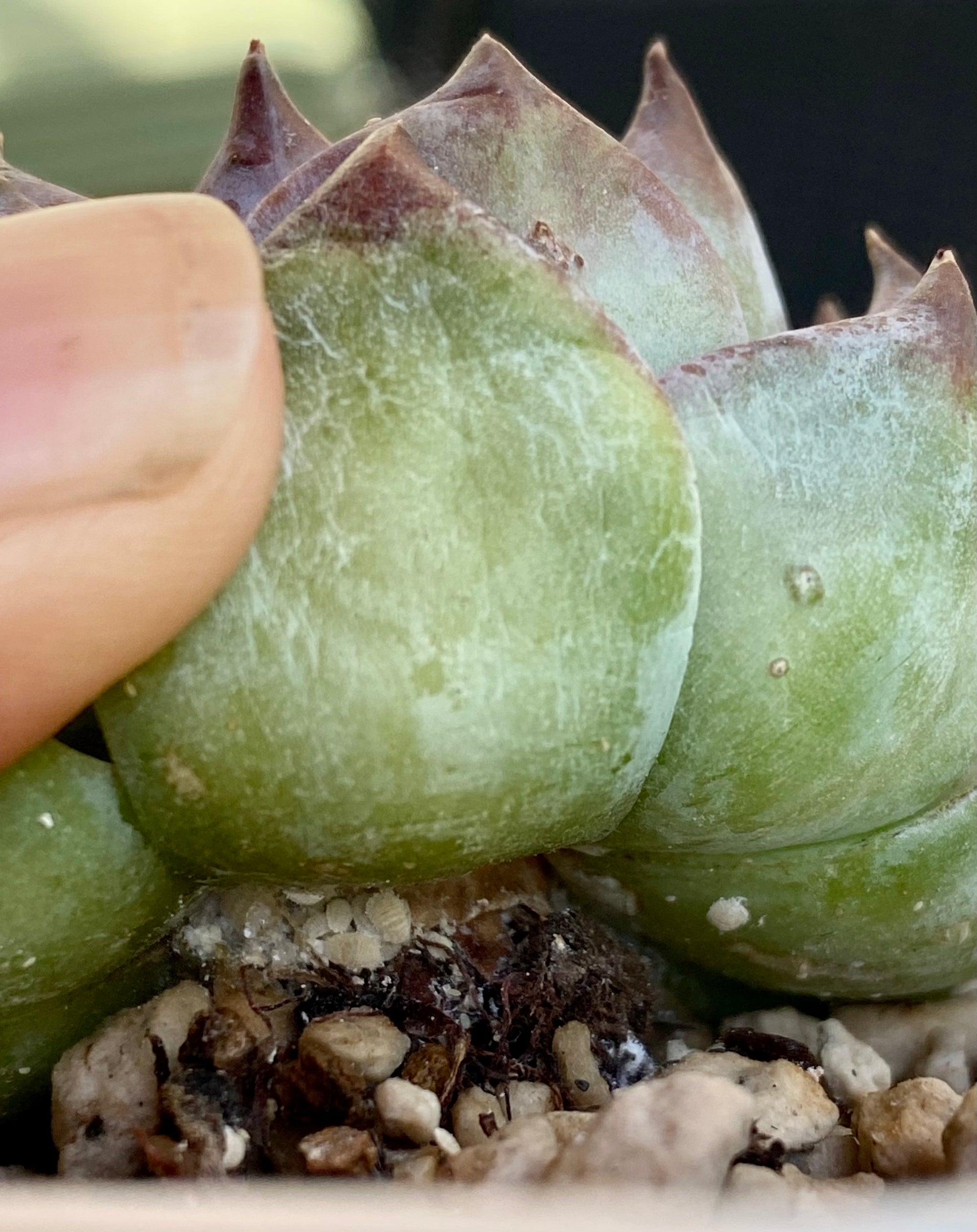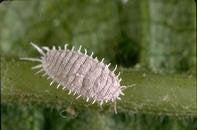
All About Mealybugs
Mealybugs are in the family of Pseduococcidae (a group of small, sap-sucking insects). Mealybugs spread from plant to plant and feed off of growth points. They’re common place in nurseries so they will arrive in your home from plants you’ve purchased from there. They are related to scales and can infest all plant parts including the roots. There are about 275 known species of mealybugs. Mealies are often visible when mature females are about 1cm long and are found in potting soil and root ball in moist, warm climate conditions. Mealybugs generally act as a catalyst to other plant diseases (see the blog fungal infection).
The body of mealybugs are covered by white, cottony wax that resembles cornmeal. Female mealybugs are active and often found along the veins of the undersides of leaves. Males typically fly and have only two wings.

Obsecure mealybug

Longtailed mealybug

Ground mealybug
Environment – Plants grown indoors or in greenhouses are more vulnerable due to the year-round mild temperatures favouring mealybugs. There are also fewer natural predators of mealies versus outdoors.
Life Cycle – Mealybugs can lay up to 600 small, yellow eggs in a protective cottony mass. The amount of eggs is dependent on temperature; the higher the temperature, the fewer the eggs. Long tailed mealybugs do not lay eggs but bear living young similar to alphids. Female mealybugs will die 5-10 days after laying eggs. Immature males (nymphs) will settle and spin a white, waxy cocoon. Adult males have tiny wings and will only live for a few days. It takes one to three months for one generation to develop (depending on temperature).
Symptoms and Effects – Mealybugs feed on the stem tips and where the leaf meets the stem. Stunted growth, chlorosis (yellow leaf tissues), defoliation (wide spread loss of leaves) and wilting are all symptoms of mealies. Mealies feed on sugary plant juice (phytosynthates) and their waste contains high sugar content (honeydew).
Root mealybugs live below ground and feed on the roots of the plants. They are thin and have a uniform waxy coating and lack the terminal wax filament found on common mealies. They are slightly larger than fungus gnats. The only way to really tell if your plants are infested with root mealies is from the declining health of your plant. Once it reaches that point, it is recommended to remove the plant from the pot or lift the bottom leaves of the succulent and observe the whiteish mealybugs on the base of the stem. They are difficult to control however, here are some preventative measures you can take:
- inspect roots of newly purchased plants by removing the pots
- root bounded plants will encourage mealybugs so a repot may be a good idea
-
use clean pots and media
-
if you don’t have a new pot, wash the existing pot with soap and hot water
5. do not allow water from infested areas to drain into clean areas as crawlers can be transported in water
 E. Chihuahuaensis is about 3 years old and looks kind of beat up. No real signs of infestation and been outside since the spring. However, after a more careful examination of the roots and stem...
E. Chihuahuaensis is about 3 years old and looks kind of beat up. No real signs of infestation and been outside since the spring. However, after a more careful examination of the roots and stem...
 This succulent has been unpotted, treated with rubbing alcohol spray, soil discarded, isolate and still left outside.
This succulent has been unpotted, treated with rubbing alcohol spray, soil discarded, isolate and still left outside.
Management – It is extremely difficult to completely get rid of mealybugs. If the infection is widespread, it is best to discard the infected and surrounding plants. Make sure the surrounding surface is washed and cleaned as well. Here are some tips:
- For light infestation, dab insect with Q-tip dipped in rubbing alcohol (70% or less). You can spray the whole plant but that will often damage the farina (which will disappear) or burn any new growth. Lightly spraying the whole plant a few days apart will minimize the possible damage. Repeat every week until the infestation is gone
- Do not over water or overfertilize; mealybugs are attracted to plants with high nitrogen levels and soft growth. High rates of nitrogen along with regular watering will stimulate new growth as well as mealybug egg production
- Ladybugs are great natural predators of mealybugs (something I will try next spring)
- Safer insecticidal soap will work on heavy infestations (though I have not tried this). The pesticide works by damaging the outer layer of soft body insect pests causing dehydration within hours. Apply 2.5oz for every gallon of water and repeat every 7-10 days as needed
- Neem oil (used to treat many forms of pests) will disrupt the growth and development of pest insects and has repellent properties. It is safe for honey bees and many other beneficial insects. Mix 1oz for every gallon of water and spray every 7-10 days as needed
- Washing foliage regularly with a leaf shine will help discourage future infestations
- Systemic insecticide has been the best method in treating mealybugs. Most systemic insecticides found in box stores or garden centres should be effective as long as they are labeled for residential or indoor use
- It is reported that mealybugs cannot survive at temperatures below 36 degree F (2 degree Celsius) for at least 36 hours
Comments or suggestions? We would love to hear about your thoughts and get your feedback.
Hope this was helpful.